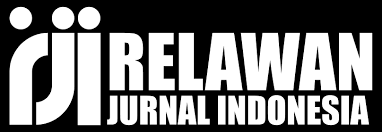Penerapan Model Reverse Jigsaw dalam Meningkatkan Keterampilan Berbicara pada Pembelajaran Bahasa Inggris
DOI:
https://doi.org/10.61722/jipm.v3i5.1304Keywords:
Reverse Jigsaw, Speaking Skills, English LearningAbstract
The purpose of this study is to describe the procedures, advantages, and disadvantages of implementing the Reverse Jigsaw learning model in English language This study employs a qualitative approach. The research subjects were English teachers at the aforementioned institutions. Data collection techniques included interviews, observations, and documentation. The results of the study show: 1) The steps of the Reverse Jigsaw model involve forming heterogeneous home groups of 4–6 members, assigning different tasks to each member, grouping students with the same tasks into expert groups to discuss the material, returning to mixed groups where each student is given a case study with several questions or one complex question and around 15 minutes to work on it. Each team member is assigned a unique topic, followed by discussion and note-taking in mixed groups. Students then regroup into expert/topic groups to compare discussion results, typically within 15–20 minutes. Finally, representatives from each expert group present their findings to the entire class. 2) The advantages of the Reverse Jigsaw model include promoting peer collaboration, enhancing students' academic abilities, enabling peer-to-peer learning, encouraging the generation of new ideas, and boosting self-confidence. 3) The disadvantages include varying perceptions in understanding the discussed concepts, requiring considerable time and thorough preparation, and difficulties in convincing students to present material to their peers if they lack confidence.
References
B A M, Sarah Apriani, Budhi Setiawan, and Kundharu Saddhono, ‘Penggunaan Bahasa Indonesia Pada Diskusi Siswa Smanegeri 4 Surakarta : Kajian Dengan Prinsip Kerja Sama Grice Dan Relevansinya Sebagai Bahan Ajar Keterampilan Berbicara’, Basastra: Jurnal Bahasa, Sastra, Dan Pengajarannya, 6.1 (2018), 281 <https://doi.org/10.20961/basastra.v6i1.37720>
Firmansyah, Bayu Mochammad, ‘Model Pembelajaran Diskusi Berbasis Perilaku Berliterasi Untuk Keterampilan Berbicara’, Jurnal Ilmiah Edukasi & Sosial, 8.2 (2019), 119–25
Hedeen, Timothy, ‘The Reverse Jigsaw: A Process of Cooperative Learning and Discussion’, 2003 <https://doi.org/https://doi.org/10.2307/3211330>
Hendri, Muspika, ‘Pembelajaran Keterampilan Berbicara Bahasa Arab Melalui Pendekatan Komunkatif’, POTENSIA: Jurnal Kependidikan Islam, 3.2 (2017), 196 <https://doi.org/10.24014/potensia.v3i2.3929>
Novianti, Ira, and Vivir Siti Fatimah, ‘Pengaruh Bahasa Daerah Dan Gaul Terhadap Guru Dan Siswa Dalam Kegiatan Belajar Mengajar’, Prosiding Seminar Nasional Pendidikan, 1 (2019), 543–49
Rohaina, Rohaina, ‘Perkembangan Bahasa Anak: Analisis Komunikasi Siswa’, Journal of Basic Education Research, 1.2 (2020), 66–69 <https://doi.org/10.37251/jber.v1i2.86>
Sari, Indah, ‘Motivasi Belajar Mahasiswa Program Studi Manajemen Dalam Penguasaan Keterampila Berbicara (Speaking) Bahasa Inggris’, Jurnal Manajemen Tools, 9.1 (2018), 41–52 <http://jurnal.pancabudi.ac.id/index.php/JUMANT/article/view/191>
Tambunan, P, ‘Pembelajaran Keterampilan Berbicara Di Sekolah Dasar’, Jurnal Curere, 22018
Downloads
Published
How to Cite
Issue
Section
License
Copyright (c) 2025 JURNAL ILMIAH PENELITIAN MAHASISWA

This work is licensed under a Creative Commons Attribution-ShareAlike 4.0 International License.












